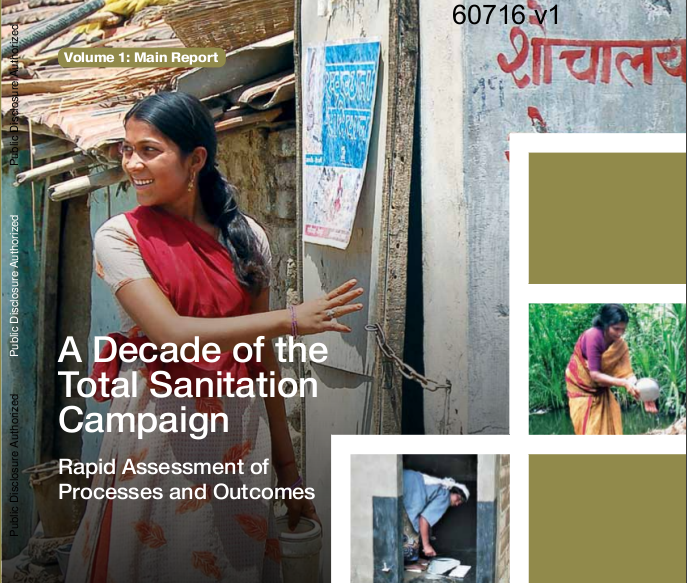/topics/public-infrastructure-and-services
Public Infrastructure and Services
"Battles over land" - Land as commodity and land for livelihoods - Special issue from Infochange
Posted on 18 Jun, 2011 12:48 AMWhat are the laws governing acquisition? What is the social impact of a development-at-all-costs policy? Can those who owned and lived off the land have a stake in its development?
Union Cabinet approves amendment to Damodar Valley Corporation Act, 1948 in 2011
Posted on 17 Jun, 2011 04:03 PMThis approval is for the reconstitution of the Damodar Valley Corporation with four full time members, namely, Chairman, Member (Technical), Member (Finance) and Member Secretary; and six part time members, namely – one representative from the Central Government; two representatives – one each from the Government of Jharkhand and the Government of West Bengal; three independent experts- one each from the field of irrigation, water supply and generation or transmission of electricity. The Chairman will be the Chief Executive Officer of the Corporation. The posts of Financial Adviser and Secretary will be abolished.
Solid waste management initiatives in small towns - Lessons and implications - A WSP report
Posted on 10 Jun, 2011 05:12 PM These efforts were developed and launched through urban local bodies and which transformed service levels and helped improve compliance with the Municipal Solid Waste Rules, in a context where the state of MSW services in most of the Indian towns has been far from sati
ADB funded hydro projects in Himachal Pradesh: Disastrous experience - Press release by Him Dhara, SANDRP and HLJM
Posted on 06 Jun, 2011 06:07 PMReport questions ADB funded projects under the 'Himachal Clean Energy Development Programme'.
- ADB loans for four hydroprojects at eco-fragile zones
- Livelihood concerns and environmental issues un-addressed
- Section 17/4 – Urgency clause being used by HPPCL for forced acquisition of land
- Poor EIA reports and non compliance to environmental norms
Recently, a Public Hearing for the World Bank funded Luhri Hydro Electric had to be cancelled after public protests making it clear that the environmental and social impacts of Hydropower projects as well as the increasing gap between their promise and performance, especially in the Himalayan region have become issues of serious concern. And yet these projects continue to be promoted in the garb of renewable and clean energy. So much so that governments are borrowing millions of rupees from international banks and financial institutions to fund these so called 'green' projects.The four ADB financed hydro power projects being constructed by HPPCL include the 195 MW Integrated Kashang Stage I, II and III and the 402 MW Shongtong-Karccham in Kinnaur. The other two projects are the 111 MW Sawara-Kuddu hydropower projects in Shimla district and the 100 MW Sainj hydropower project in Kullu District.
Harbouring trouble - The social and environmental upshot of port growth in India – A report by Dakshin Foundation
Posted on 22 May, 2011 12:04 PMBesides its own impact, port development is often accompanied by other activities such as the location of industries, power plants, railway lines, highways, hotels, SEZs, residential complexes, etc., that have multiple detrimental impacts – environmental, social and erosion related.
NREGA and rural water management in India: Improving the welfare effects – An occasional paper by IRAP
Posted on 09 May, 2011 09:41 PMNREGA is being eulogized by many in the academic, development and policy arena as a “silver bullet” for eradicating rural poverty and unemployment, by way of generating demand for productive labour force in villages and private incentives for management of common property resources.
A decade of the Total Sanitation Campaign - Rapid assessment of processes and outcomes - A report by the Water and Sanitation Program (2011)
Posted on 30 Apr, 2011 05:23 PM The Water and Sanitation Program has analysed secondary data on the Total Sanitation Campaign (TSC) available on government websites and conducted primary analysis in 22 sample districts spread across 21 states.
The Water and Sanitation Program has analysed secondary data on the Total Sanitation Campaign (TSC) available on government websites and conducted primary analysis in 22 sample districts spread across 21 states.
With the use of secondary and primary data the report has not only been able to give a macro view of the TSC but also has been able to go into the nitty-gritty of the campaign. There are case studies of districts and villages that have achieved open defecation free status.
Development of training module for water safety plan in urban areas - A document by ESCI
Posted on 20 Apr, 2011 03:48 AMA Water Safety Plan (WSP) is an improved risk management tool designed to ensure the delivery of safe drinking water. It identifies hazards, means to control them, means and actions to identify loss of control and its restoration. It comprises system assessment and design, operational monitoring and management plans (including documentation and communication). Water quality guidelines have been issued by the WHO.
Drinking water quality monitoring and development of surveillance mechanisms - A pilot study done by NEERI in New Delhi
Posted on 20 Apr, 2011 02:30 AMThe WHO guidelines for drinking water quality aim to protect public health and the key way to ensure this is through the adoption of Water Safety Plans (WSP). WSP includes setting of health targets, risk analysis and its assessment to identify priority hazardous scenarios and management of the risk.
Resistance against the Polavaram dam - An EPW article
Posted on 19 Apr, 2011 11:02 PM
This EPW paper studies the various forms of resistance against the construction of Polavaram dam, and notes that the main feature of the struggles has been the involvement of people’s organisations due to the failure of traditional as well as statutory bodies, representatives and regional leadership of mainstream political parties.





